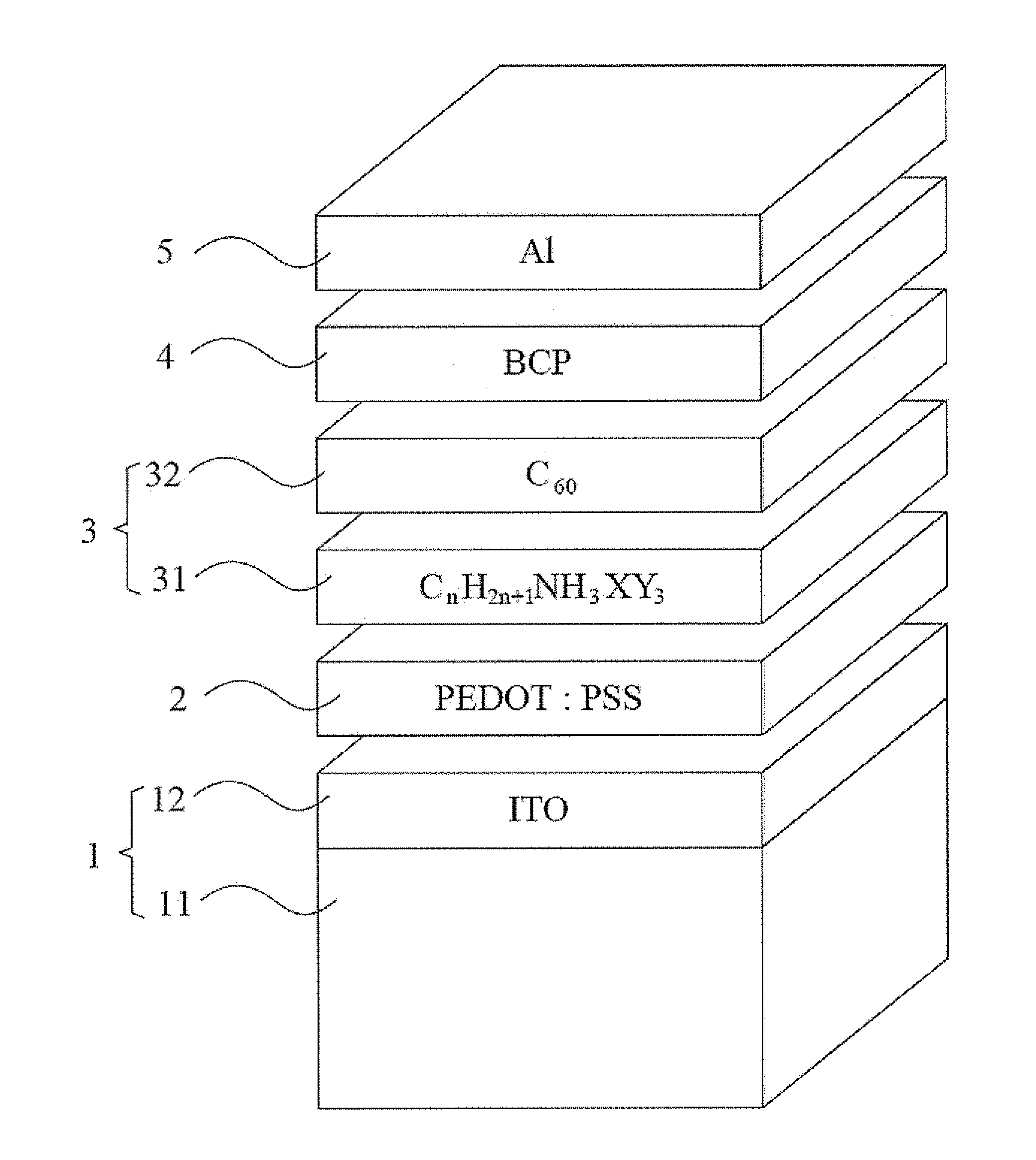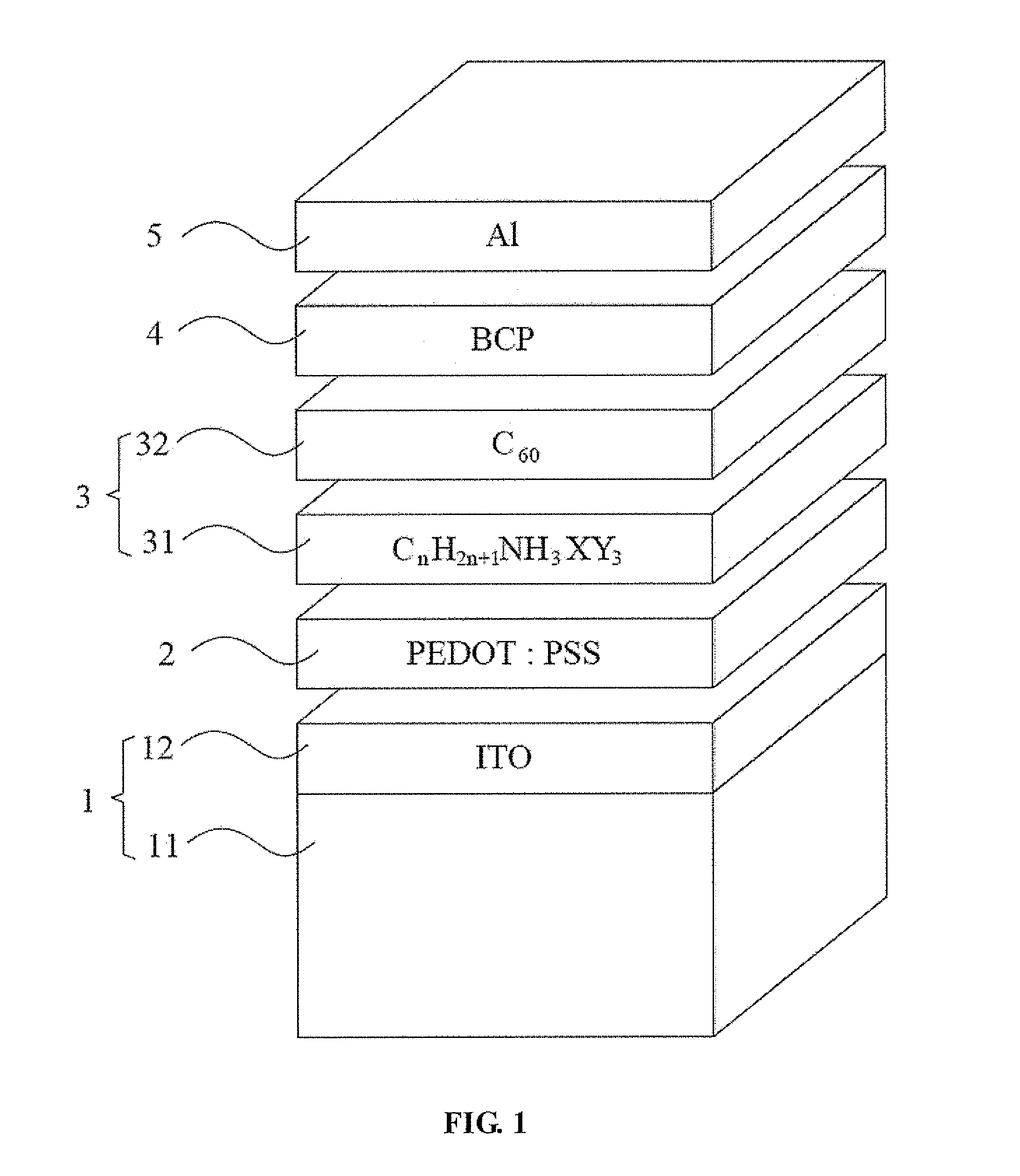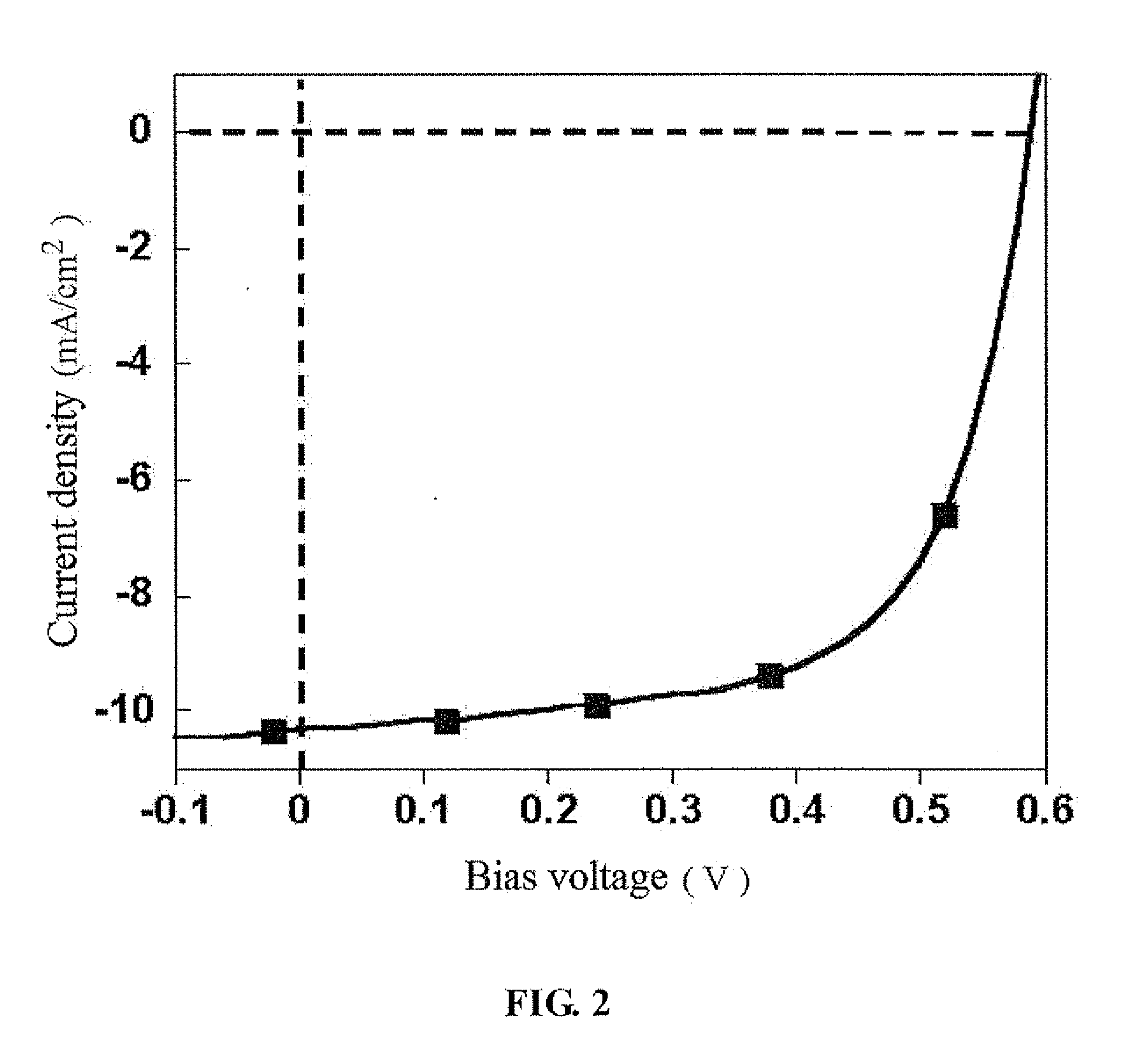Hybrid organic solar cell with perovskite structure as absorption material and manufacturing method thereof
a solar cell and organic technology, applied in the field of solar cells, can solve the problems of poor solubility, difficult to form a complete film, and inability to efficiently flatten molecules on the entire surface, and achieve the effects of low cost, high cost, and simple structure and fabricating process
- Summary
- Abstract
- Description
- Claims
- Application Information
AI Technical Summary
Benefits of technology
Problems solved by technology
Method used
Image
Examples
Embodiment Construction
[0030]The structure and the technical means adopted by the present invention to achieve the above and other objects can be best understood by referring to the following detailed description of the preferred embodiments and the accompanying drawings. Furthermore, in this regard, directional terminology, such as “up,”“down,”“top,”“bottom,”“front,”“back,”“left,”“right,”“inside,”“outside,”“side,”“around,”“center,”“horizontal,”“transverse,”“vertical,”“longitudinal,”“axial,”“radial,”“top-most layer,”“bottom-most layer,” etc., is used with reference to the orientation of the Figure(s) being described. As such, the directional terminology is used for purposes of illustration and is in no way limiting.
[0031]Referring to FIG. 1, a hybrid organic solar cell with perovskite structure as absorption material according to a preferred embodiment of the present invention is illustrated. As shown, the hybrid organic solar cell with perovskite structure as absorption material includes a conductive sub...
PUM
 Login to View More
Login to View More Abstract
Description
Claims
Application Information
 Login to View More
Login to View More - R&D
- Intellectual Property
- Life Sciences
- Materials
- Tech Scout
- Unparalleled Data Quality
- Higher Quality Content
- 60% Fewer Hallucinations
Browse by: Latest US Patents, China's latest patents, Technical Efficacy Thesaurus, Application Domain, Technology Topic, Popular Technical Reports.
© 2025 PatSnap. All rights reserved.Legal|Privacy policy|Modern Slavery Act Transparency Statement|Sitemap|About US| Contact US: help@patsnap.com



